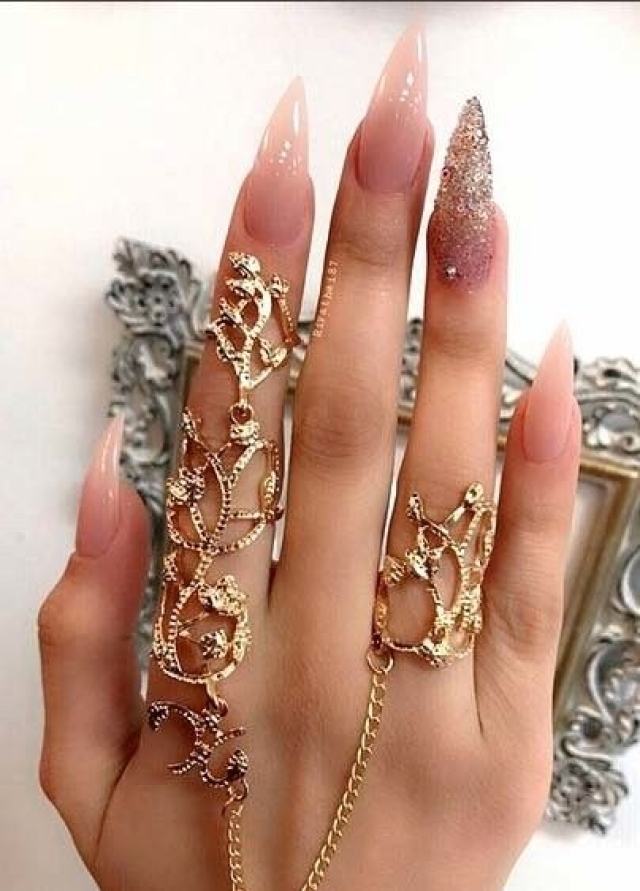Drilling semi precious stones for jewelry is a process by which craftsmen make fine jewelry pieces. This process requires specialized tools and knowledge to create the desired effects, and often the stone pieces need to be drilled multiple times in order to get the desired look.
Drilling semi-precious stones can provide a unique and beautiful look that can’t be achieved with just metal or other materials alone. While it takes an experienced hand, with the right techniques and tools, creating beautiful jewelry from semi-precious gems is not impossible.
Tools Needed for Drilling Semi Precious Stones When beginning a project of drilling semi precious stones for jewelry, there are several different types of tools needed. Most notably, jewelers will use either a hard diamond drill bit or an ultrafine carbide drill bit.
Both will provide more cutting power than traditional drill bits, and they will also help you create more intricate designs on the stone itself when drilling deeper into the material. Another important tool needed for this type of work is a Jewelers saw; this saw will help you craft your design with much finer lines and details than what would have been possible with traditional steel blades.
The Process and Techniques Behind Drilling Semi Precious Stones Once all the necessary tools are gathered, it’s time to start with the drilling process itself. Depending on both the size of the gemstone piece being worked on as well as its composition (hardness), special steps must be taken when drilling holes into them with these specialized bits.
For example, if working on softer materials or smaller pieces, one should use slower speeds while operating their drill; This helps keep them from shattering due to too much pressure being applied all at once.
Additionally one should keep their drill bit lubricated during this process; Doing so can help smooth out rough spots left behind on softer Gems after they have been drilled through.
Furthermore it’s advisable to bring along safety goggles during any drilling projects; This helps keep you safe from flying debris while working in enclosed areas near your workstation where dust particles may fly off due to rotation speeds created by speciality bits such as those mentioned before for semi-precious drilling purposes.
By following these tips and utilizing proper safety equipment, anyone can become proficient at producing high quality crafted designs using semi-precious stones successfully. With patience and practice comes good results when drilling these gems for jewelry purposes.
Tools and Supplies Needed for Drilling
- Drill press
- Diamond-tipped drill bits
- Protective eyewear
- Wax lubricant
- Jewelers clamps
- Assorted needle files and rasps
Drilling semi precious stones for jewelry can be an interesting endeavor, although it requires being equipped with the correct tools. The first tool to consider is a drill press which provides ample power to make precise holes into hard gemstones.
Additionally, diamond-tipped drill bits are needed in order for the stones to be drilled without cracking or breaking them. Even though diamond-tipped drill bits are more expensive than traditional drill bits, they hold up better against wear and tear due to their durability.
To ensure users’ safety, protective eyewear should always be worn when drilling semi precious stones. Furthermore, wax lubricant may also be used at the point of contact between the semi-precious stone and the drill bit as it helps reduce friction generated by the two objects rubbing against each other.
Jewelers clamps can help keep gemstones in place while they are being drilled in order to make sure that drilling is done straight and even. Finally, since most gemstones do not come with perfectly smooth edges, assorted needle files and rasps may come in handy after drilling is complete; these tools help ensure that gemstones have smooth rounded edges perfect for setting into jewelry pieces.
Selecting the Right Stones for Drilling
When it comes to jewelry making, selecting the right stones is key for a successful finished product. Drilling semi-precious stones is no exception and requires careful selection if one wants to achieve desired results.
First, there are several types of semi-precious stones that one can use when drilling for jewelry. These include agates, angelite, aventurine, chalcedony, chrysoprase, citrine, dolomite and labradorite just to name a few.
Though they all look quite different when raw or polished – their similarities can be found in the fact that they are all composed of quartz and mica minerals. Knowing what type of stone you will be drilling helps to determine the right bit size and shape for the job as well as picking a stone that fits within your budget.
Knowing the right bit type and size is essential when drilling through semi-precious stones. Generally speaking larger holes require diamond core bits due to their hardness ratings while small holes can usually be accomplished with conventional diamond drills or carbide tipped bits depending on the material being used.
Keep in mind that each drill is also specified for a certain depth before they need changing out – so make sure you get the right bit and ones rated appropriately for your desired depth.
Concerning safety protocol while working with semi-precious stones it’s best practice to wear protective eyeglasses or safety goggles at all times during drilling process as well as having good ventilation in your workspace to reduce vapor inhalation from dust particles released during cutting process.
Additionally, wearing gloves help protect skin from any chip fragments that could be produced from contact with brittle surfaces while bringing drill towards its target area within stone object being held firmly by both hands and always keeping fingers away from business end when tool has been activated till cut has been successfully executed.
It’s also important to note that some dampening methods may need applying onto surface before commencement of drilling procedure which will assist greatly in avoiding heat build up or any micro fractures from over intrusion on brittle materials – so these kind preventative measures should always be kept in mind during preparation stages prior to operation execution itself taking place.
Choosing The Correct Drill Bit
When selecting a drill bit for drilling semi-precious stones, the type of stone should be taken into account so that the correct type of drill bit is used. Hard stones such as quartz, granite and agate require diamond impregnated or carbide-tipped drills. These types of drills are suitable for cutting and polishing semi-precious stones and will not wear down easily over time.
It is also important to select a drill bit with the right size and shape to suit the desired design effect. A larger diameter bit can be used for creating holes in large cabochons while smaller bits are needed for more intricate designs.
Preparing The Stone For Drilling
Before drilling a semi-precious stone it should be properly prepared to ensure that the hole comes out cleanly without fracturing the material. It is best to use a light oil such as baby oil and rub this around the area where the hole will be made along with additional dusting of diamond powder if appropriate for certain types of gemstones such as quartz or amethyst.
This will help lubricate and protect the gemstone during drilling preventing it from heating up too quickly which can cause cracking and fractures.
Tips For A Clean Drill Hole
It is essential to ensure that both hands remain on either side of the stone while drilling. This helps maintain control while also ensuring pressure is applied evenly on both sides of stone which helps maintain a clean hole throughout.
Additionally, it is important to keep turning both hands in opposite directions resulting in relative movement between both hands reducing friction between them and therefore reducing any potential damage caused from heat build up within stone due to friction generated by movement between hands during drilling process.
It also recommended holding piece firmly in place with vice or similar clamping device while not continuously exerting too much pressure on piece since this may cause breakage or fracturing through overheating, something worse than wearing down over time due incorrect choice of drill bit or insufficient protection against high friction surfaces occurring during drilling process.
Safety Tips when Drilling Semi Precious Stones
Drilling semi-precious stones for jewelry is a popular craft, but safety should always be the first priority when attempting these techniques. Protective gear such as eye protection and a dust mask should be worn to prevent any particle from entering the eyes or lungs during the drilling process.
When working on semi-precious stones a bit with high speeds are best to avoid unnecessary fracturing or cracking of the gems. Any time that one works with small objects like these precautionary measures should be taken to reduce scattering of debris and potential injury.
When selecting your protective gear for drilling semi-precious stones make sure to purchase goggles that have wrap-around rims and anti-glare coatings. These features allow you to easily observe any imperfections in your stones without hindrance due to glare from bright lights or shadows cast by overhead lamps.
Dust masks also need to fit properly on your face; they should have adjustable straps and shouldn’t be too tight as this can cause migraine headaches afterwards. Additionally, it is advisable to wear gloves when handling and positioning your precious gemstones while drilling them as well as protective eyewear when cutting or filing away excess material.
Furthermore, while using an electric drill double check the chuck size against the size guide listed on your drill bit’s packaging; this will ensure that the bit fits properly into the drill without being too loose which could cause unexpected slips or even fractures in your stone if under pressure.
Always ensure that you use low speed settings with the electric drill when drilling semi careful precious stones so that heat accumulation is kept at bay – running at high speeds for excessive lengths of time might cause gems to melt away due to excessive friction heat.
Make sure you keep stops drilled onto various depths in order mark their progress regularly; once solid contact has been achieved stop immediately so as not disturb already successfully stooped level of depth in any way before continuing further on. Ultimately, if done right, drilling semi precious stones for jewelry can be made into a safe endeavour with minimal risk via following safety precautions outlined here, now happy crafting.
Drilling Techniques
When drilling semi precious stones for jewelry, there are many different techniques and parameters that need to be considered. One of the most important factors is proper drill speed, as this helps to reduce the amount of heat generated during the process. Generally speaking, lower drill speeds will generate less heat which will in turn help to preserve the integrity of the gemstone being worked with.
It should also be noted that too low a drill speed can result in poor cutting performance. As a result it is recommended that drills be operated at medium-high speeds when drilling semi-precious stones.
Additionally, temperature management will also play a role when it comes to successfully drilling semi-precious stones. Excessive temperatures generated by high speeds can lead to thermal damage which in some cases can destroy fragile or sensitive gemstones like opal or coral. In order to avoid this situation it is better practice to focus on reducing drill speed rather than solely relying on pause periods for cooling off hot diamonds or burs.
Specialty Attachments
Once proper drill speeds have been established, special attachments may still be necessary depending on what type of jewelry is being created and under what conditions. For instance, when working with softer materials such as gold or silver, standard diamond bits may not be enough and specialty burs would need to be employed for additional cutting strength and precision accuracy during the drilling process.
On the other hand, harder semi precious stones such as rubies and sapphires usually require diamond bits combined with an adequately sized water channel bit for cooling down during operation. This combination provides both strong cutting power while at the same time protecting against thermal shock damage due to excess heat buildup from high speeds.
Final Considerations
Finally, it is always important to remember that these considerations must all take into account exactly what type of stone being drilled; its hardness and composition as well as any treatments or coatings applied prior to drilling operations commencing (i.e., waxing).
For example some treatments such as waxing could potentially melt under prolonged contact with excessive heat making their effects virtually useless in comparison with untreated gems that require only moderate lubrication through minimal coolant application via a water channeled bur/bit set up combination.
Understanding The Different Drill Angles
Drilling semi-precious stones for jewelry requires a highly specialized technique. Not only is it important to understand and prepare your stone properly, but drilling with the right angle, type of drill bit, drilling speed, and force can make difference between a clean neat hole and possibly spoiling the stone’s appearance.
When talking about angles when it comes to the drill bit itself, this has to do with the type of drilling projects you will be involved in. When working on larger stones such as agate or geodes, wider drill patterns with flat bits are used because they provide good coverage across large surfaces.
However if you are dealing with smaller stones such as tourmaline or quartzitic stones, then a high angle like 90 degrees is ideal allowing for cleaner and more sharply defined holes.
Choosing the correct drill bit type is also something that should be taken into consideration when drilling semi-precious stones. This depends on your project needs as different projects require different drill bits for reliable performance. For instance a twisted masonry styled drill works well when breaking apart inlaid materials like turquoise or nugget-like materials such as carnelian.
Conventional metal/wood bits tend to work better for softer porous stones like jadeite and other similar material including ivory that easily break down calcareous deposits near the surface area of your gemstone’s exterior. Whichever drill bit you choose should maintain its integrity even through prolonged use while still enabling small intricate shapes that promote continuity in finishing touches like polishing grit (to ensure smoothness in cut lines during buffing processes).
Lastly when it comes not just to the best technique but also safety measures when carrying out this type of project – practice self restraint while operating machinery at all times especially when directly dealing with all sources of heat come into contact with diamond cutters used in diamond drills which reach °F temperatures or higher during operation.
Always remember that there may be additional safety precautions based on whatever materials you are using so make sure you investigate these prior ahead before beginning any project involving gemstones/semi precious minerals.
Creating Smooth and Clean Drill Holes
Drilling semi-precious stones such as onyx, marble and even quartz for jewelry making requires a steady hand, patience and the right combination of tools. When drilling these stones one needs to be mindful of the stone’s overall appearance, as well as its core strength. Without utilizing proper techniques a stoney could easily suffer from weakened sections or unclean drill holes.
To avoid this, most manufacturers turn to various drilling aids for assistance. Depending on the hardness of the material being drilled, several products exist that can help create clean & consistent cut surfaces without risking damage to delicate structures. The most popular options include:
- Diamond Core Bits
- Bonded Diamond Wheels
- Vacuum Brazing Drills
- Water Jet Cutters
Each of these is extremely useful in different situations when it comes to drilling semi-precious stones. For example, diamond core bits are ideal for drilling into harder materials such as granite and quartz due to their extreme hardness and toughness.
On the other hand, vacuum brazing drills are excellent at creating very precise holes in more fragile materials like jasper or alabaster due to their slow operation speed which helps prevent fractures or chips from occurring during the drilling process. Finally, water jet cutters provide an incredibly fast way of cutting through stone surfaces with minimal effort required by the user, however they do require higher power outputs which makes them a costlier option for most operations.
Polishing and Finishing the Drill Holes
Once the drill holes for semi precious stones have been created, it is important to polish and finish the surface in order to keep the stone safe from damage. This can be done by hand with a polishing wheel or by using a tumbler machine.
Polishing will smooth out any chipped sections and remove burrs and debris left over from drilling. The use of waxmish will also help to protect the stone against external moisture which can cause discolouration, stone staining or potentially further breakage of the stone itself.
The two most popular waxes used in jewellery are beeswax and carnauba wax. Beeswax has excellent adhesion properties meaning it dosn’t easily flake off whilst adding extra protection due to its water-resistant properties. Carnauba wax is harder than beeswax offering improved durability with added hardness, making it ideal for sealing more porous gemstones such as opal, turquoise and jadeite.
When applying either of these wax finishes, warm the mixture and rub it gently into the surface for a smoother finish. If possible advice on polishing should always be followed that is specific to that particular gemstone type.
Diamond Drill Bits For Use On Semi Precious Stones
The single most important tool when drilling semi precious stones is without a doubt the choice of drill bit used; this must match exactly the physical characteristics of the gemstone being worked on – softness versus hardness – if you use an inappropriate diamond bit, not only may you ruin your material but you can also damage your machinery.
Just like there are different grades of diamond drills (such as individually hand edged diamonds drilled with tiny holes versus ringed diamond drills – similar in construction to semiconductor drills) there are also different parts of diamond drills depending on their purpose: crowns, shanks & flat faces, just to name a few types available for purchase.
Generally speaking if one opts for lower quality diamond drill bits then they will not last long due to high friction between surfaces; constantly having to replace them means higher costs overall so research beforehand as much as possible before committing.
With all this said: diamond drill bits definitely remain one of the most effective tools for jewellers working with semi precious stones.
Incorporating Stones into Jewelry Designs
Jewelry designs that incorporate semi precious stones such as jade, opal and turquoise are abundant and timeless. With the use of a few basic tools, the craft of setting and drilling semi-precious stones into jewelry pieces is one that can be enjoyed for many pathways. It’s an idea way to add some colour to your jewelry designs.
Drilling semi-precious stones requires a good knowledge about different materials, tools and techniques. The first step is to select a piece of stone that will fit in the design you are trying to create. If you are not sure which type of stone would be best suited for a particular design, consider consulting with a professional gemologist who can provide advice on both types of gems along with their relative attributes such as hardness and durability.
Next you will need to purchase or rent diamond drills or specialized “flex shafts” designed specifically for this purpose. Before beginning any drilling project, it’s important that safety be foremost in mind. Ensure that appropriate eye protection and gloves are worn when engaging in this process.
At this stage, many find it beneficial to mark the area they plan on drilling before actually making any contact with the stone.
Place dot markers over every place where there will be an opening made using the drills so as to reduce potential errors during the process; drilling too deeply or sharply could damage or destroy parts of the design accidentally while failing to drill deep enough may cause various connections to fall apart later on in the assembly process.
Once all points have been marked on the stone, start drilling carefully following safety procedures discussed earlier while paying special attention not to apply too much pressure or force unnecessary wear on delicate surrounding areas during the procedure.
After drilling has been completed with desired results achieved simply rinse off remaining particles from drilled areas in water before assembling any metal components necessary for final aesthetic form enhancement around drilled stones if applicable These combinations allow room for exploration while creating unique jewellery pieces steeped with sophisticated class by artistry. With patience, practice and careful precision an artisan can create breathtaking work demonstrating technique while executing each custom creation given its own personal touch.

Welcome to my jewelry blog! My name is Sarah and I am the owner of this blog.
I love making jewelry and sharing my creations with others.
So whether you’re someone who loves wearing jewelry yourself or simply enjoys learning about it, be sure to check out my blog for insightful posts on everything related to this exciting topic!





